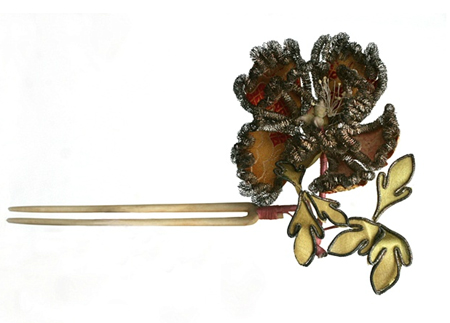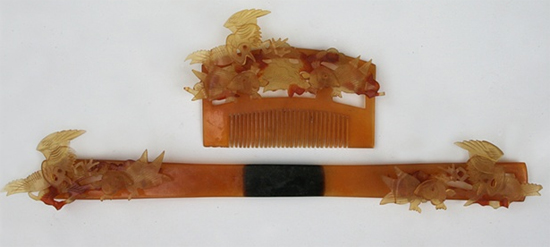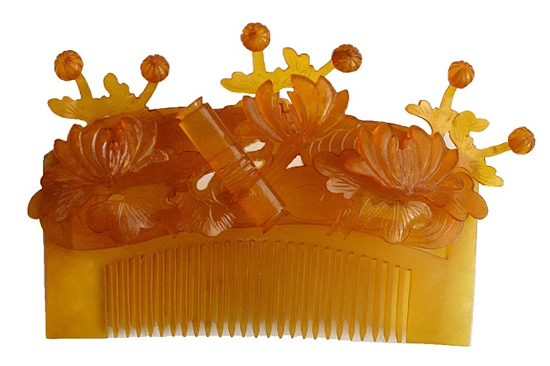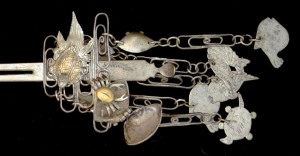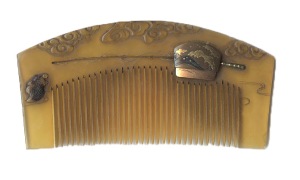For the kanzashi collector, it is helpful to be able to discern between that which is decorative and pieces which are art. Auction prices often confirm the fact that the more art qualities a kanzashi has, the more collectable it becomes. Decorative hair combs (which are often quite beautiful in their own right), will not possess the depth of expression that is seen in more artistic pieces. Art is distinguished by its originality, a sense of aesthetics and clear, purposeful expression. Often, within in it, one feels the presence of the maker – there is the sense that the piece has its own personality.
In the top comb set we see lovely decorative flower design. But on second glance we find a demonic figure hiding in the right side of the stick. The inclusion of ugliness with utmost beauty makes a statement about life that is beyond the decorative –the comb set has now become evocative and more poetic in mood. In the second comb, the artist reaches beyond the decorative in this complex, beautifully executed design. On it are two separate landscapes, each one on golden, smooth lacquer fan shapes. Around these shapes, darker, roughly carved water forms flow. The movement of the water gives a feeling of excitement to the piece, especially when contrasted with the smooth texture of the fan shapes and the serene designs within them. The water even cuts into the fan forms, just as water does in real life, showing that the artist who made this gave a lot of thought to the play between the two opposing elements: surging water and serene landscapes. When an artisan goes the extra mile to create something exceptional, the result is often that ever-elusive thing we call “art.”
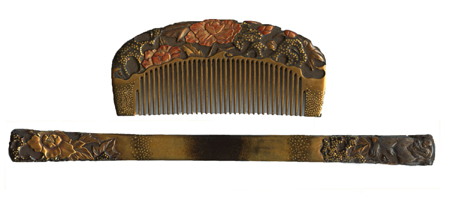
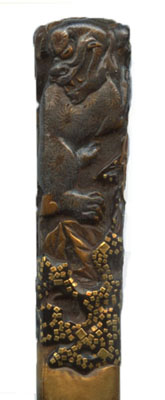
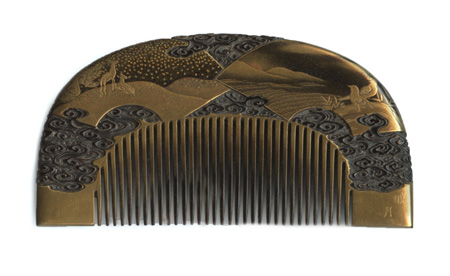
कंघी
For more scholarly, research, please examine

